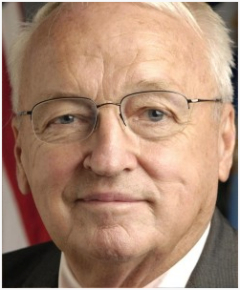 By Kevin Concannon, USDA Under Secretary for Food, Nutrition and Consumer Services
By Kevin Concannon, USDA Under Secretary for Food, Nutrition and Consumer Services
As a child, I always looked forward to the carefree joy of summertime. I remember the long days of playing outside at a nearby park until I needed to come home for lunch. Unfortunately, many of our nation’s children do not experience the simple joys of summer. In fact, far too many are left worrying where their next breakfast or lunch will come from when schools are dismissed for summer break.
During the school year, about 31 million American children receive school meals through the National School Lunch Program and School Breakfast Program every day. About 21 million of those children receive meals free, or at a discounted rate based on their family’s income. When summer rolls around, though, only about 3.5 million of these children participate in USDA’s summer meals programs.
That means millions of eligible low-income children are at risk of going hungry during the summer months. And we know that to thrive and reach their highest potential, children need good nutrition all year long.
USDA’s Summer Food Service Program (SFSP) is working to fill this hunger gap for children who qualify for free and reduced price meals during the school year. The program serves free healthy meals to eligible children ages 18 and under, and is made possible through the efforts of national, state, and local partners, including a cadre of energized volunteers.
While we have worked to increase access to summer meals for low-income children for many years, last summer USDA employed a new tactic of working with partners to deliver intensive, targeted technical assistance on SFSP in five states. The result was a historic increase in the number of meals served, nationwide – 7 million more than the previous year! We hope to continue building on last year’s successes with our state and local partners in 2014, and move closer to closing the summer hunger gap.
The key to success this year will be expanding the number of sites open for summer meals. We must spread the word to schools, parks and recreation departments, libraries, and faith and other community organizations across the nation; their participation is critical for the continued success of SFSP. The deadlines to become Summer Food Service Program sponsors vary by State, and begin as early as April 15. Program sponsors oversee and provide meals to summer sites. In return, USDA, through the States, reimburses program sponsors for the meals served to children.
I’m sure it comes as no surprise when I say that galvanizing hundreds of faith-based groups, civic groups, recreation centers, food banks, schools, other nonprofit organizations, and volunteers takes time, effort and commitment on all sides. For any community that treasures its youth (and I haven’t met one that doesn’t), we must organize now to fight hunger this summer.
If you or your organization is interested in helping us reduce the risk of hunger among our nation’s youth, visit our website, www.summerfood.usda.gov. The summer meals outreach toolkit includes sample outreach plans, templates, customizable flyers, door hangers, letters to parents, examples of site activities, best practices, and more. State representatives are also available to answer questions and facilitate sponsor enrollment and site registration.
This year, let’s work together to make sure every child in our great nation has a hunger-free summer.



